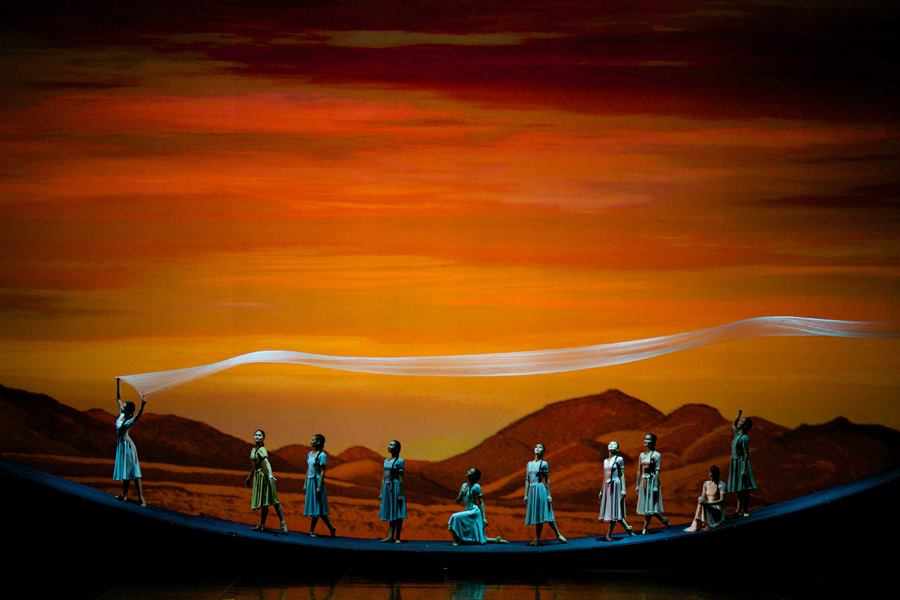
I’m a big balletomane and especially of the Russian ballet school; it’s one of the reasons I have an apartment in St.Petersburg. The Mariinsky is possibly the worlds greatest ballet troupe, and especially now the Bolshoi is caught up in political and financial scandals. Under Valery Gergiev the Mariinsky is a living institution; it commissions new works as well as offer tickets at a very reasonable price. The average age attending is 32 – at New Yorks Met it is 70. Hence it is common at the Mariinsky to see young schoolgirls and their young Mothers attending the ballet as well as elderly Babushka’s – it is art for the people, not just the elite as it has become in the United States and is in danger of doing so in London.
As many of my readers know, I’ve travelled extensively throughout Asia, and it was a real pleasure to be able to catch the Astana Ballet from Kazakhstan at the Mariinsky, performing “Zhusan” a story about Central Asia and the Kazak Steppes.
The ballet was excellent and they are a ballet troupe to look out for. They took Paris by storm last season. Recommended, there is some amazing contemporary art coming out of Central Asia. Here is the review of the ballets premiere from the Astana Times last year: “The ballet, which recounts the formation of the Kazakh people’s identity, was warmly welcomed by local audiences and generated much emotion and applause from the city’s art-loving scene. “Zhusan†(Kazakh for wormwood, a plant inherent to the steppes) was created in the genre of “plotless ballet,†which directors note does not mean the absence of content. According to young choreographer Mukaram Avahri,she was guided by strong feelings and emotions while creating the dance movements.
“This performance is ambiguous. We see young women and the bride and all of a sudden the picture is swept by the Samum steppe wind and filled with sand. Then suddenly we see a picture from past times. And everything is conveyed through the monologue, the story of sagebrush, steppe grass – Zhusan. For me, Zhusan first of all implies an emotional state. The performance in general conveys the mood, the state. An emotional state was important for me,†said Avahri.
The work of the choreographer is divided into nine scenes: The Bride, Samum (Sandstorm), Wormwood, Centaurs, A Gift from Heaven, Hunting, Massive Loss of Cattle, Awakening and Invasion. The main idea of the ballet is based on the legends and myths of the steppe people; their allegorical image is embodied in the dance. The central theme of the play is the steppe’s memory awakening with distant and recent events. A short but very meaningful description by the author says that past and present, war and peace, inland and outland, serene and alarm, captivity and freedom, passion and tenderness are elements of the content.”
The performance was enhanced by a combination of choreography and extracts from great European, Russian and national music, as well as lighting design with video projections. All these help to immerse oneself in the atmosphere of a real journey through the vast steppes, legends and myths – and it was true to form – I have spent months out in the Central Asian Steppes and have travelled the region.
Outstanding local and Russian dancers, including Alila Alisheva, Aigul Tati, Nikolai Markelov and tutor Zaure Umbetkulova, participated in the staging of the ballet, while the music was sourced from various prominent composers, such as Kuat Shildebayev, Sergei Rachmaninoff, Arvo Pärt and Karl Jenkins. Shildebayev’s melodies underpin the musical core of the ballet. Costume designer Olga Shaishmelashvili, a director and designer from St. Petersburg, was able to combine the experience of the past with original, modern background designs.
“Zhusan” was truly spectacular and a real Central Asian delight, if you get the chance I can strongly recommend seeing it. If not – here is a clip: